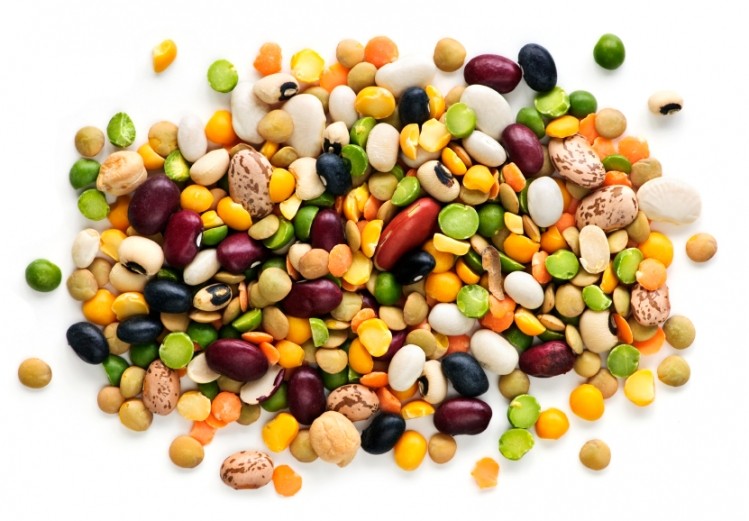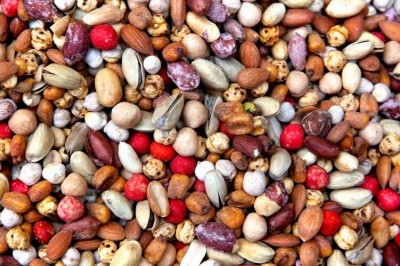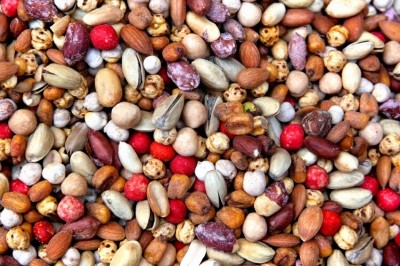What’s holding back the growth of organic pulses in Europe?

Hodmedods, the Suffolk-based grower of British-grown pulses and grains, set aside 24 acres of field to grow organic lentils that are available to buy this autumn.
Organic lentils shouldn’t make headlines like this. Their popularity in countries like India and Canada, coupled with its impressive nutrient profile should put them on par with cereals and vegetables as a nutritious staple on the dinner table.
According to the John Innes Centre, a UK-based plant research centre, pulse acreage in the UK in general has been in decline since 2001, falling from 319,000 hectares to 157,000 hectares in 2012.
Combinable peas (for the dried pea market) have suffered the greatest decline, a 70% fall in the same period. Though the acreage of vining (fresh) peas has been more stable it is also in gradual decline.
But there are also signs that pulses are starting to get some long-awaited recognition. The United Nations declared 2016 as the ‘International Year of Pulses’, putting the crop in the spotlight for many of its food and agriculture campaigns.
In Sweden, 70% of its agricultural land is currently used for animal feed production, with much potential to grow more varieties of grain legumes including pea, faba bean, Phaseolus beans, lupins, lentil and soybean.
At last year's Organic Producers’ Conference in Bristol, land use estimates to cultivate grain legumes to replace part of the country's meat consumption would require about 60 000 ha assuming average grain legume yield of 3 ton/ha, containing 26 % protein.
This pulse-based resurgence, according to Dr Pietro Iannetta, co-ordinator of the EU-funded project ‘TRansition paths to sUstainable legume-based systems in Europe’ (TRUE), also coincides with the wave of the vegan, meat-and gluten-free movements that have gathered much momentum in recent times.
“There is no doubt. This cultural shift will take many years,” he said. “The dietary importance of grain and forage legumes have been largely lost due to the appearance of man-made fertiliser and markets polarised towards a very small number of crops.
“There are 22 species of grain legume which could be grown in Europe. So, there is polarisation within even the grain legume market (soybean, peas, beans). The cropping system should be diverse, and this diversity should reflect a good balance of legumes and non-legumes.”
The commercial producer
In describing ways to boost organic pulse cultivation Dr Iannetta refers to the system Canada has adopted in which 22% of its arable systems area located towards grain legume cultivation.
This is a magic number, he said adding that the key turning point was the removal of agricultural subsidies in mid-1990’s in preparation for global trade.
“The main thing I think needs developing though is processing capacities (methods and equipment), both at large and small-scales,” he said.
“All that is done with cereals can be done with pulses (with better starch and proteins provided). However, pulses have larger grains which are more irregular in size.”
More research by the John Innes Centre talks of how little incentive there is for farmers to get up to speed with optimal cultivation techniques and storage practices to ensure maximum return.
The consumer
But it’s not reasonable to place the decline of pulse cultivation and consumption at the door of producers.
The research also discusses how much consumers are in the dark regarding the health benefits of pulses as well as general attitudes towards the crops.
It’s a position that Dr Iannetta has much to say on, particularly with the use of the term ‘organic.’
While, in the past consumers switched to organic for personal reasons and mainly to avoid exposure to man-made pesticides, Dr Iannetta identifies an association that hinders the adoption of organic pulses.
“Currently organic also means ‘more expensive’, which is a deterrent to many purchasers, and especially those of lower socio-economic status. The best food choices do not have to be expensive. Data has shown that in rains fed systems, organic production is only 5% less productive than conventional. So, why the price hike? Inputs are less after all, are they not?"
The ‘interesting’ supply chain
The producers, coupled with the consumer, form a pulse-growing supply chain that Dr Iannetta argues is not up to the task of delivering the next stage of commercial growth.
“Certainly, the supply chain is limited. Many industries have developed their own supply chains to ensure consistency of supply and quality.
“These industries are generally unconnected, though contract buyers (seed merchant) may represent a pinch-point to coordinate the activities of currently unconnected supply-chains.
“Also, perhaps also to start processing themselves. This will work for large-scale industries. However, also watch community-based initiatives, which are on the rise. There is a resurgence in the craft related activities, and development of the capacity within these sectors should not be ignored either.”
The Vegan Society recently described the UK’s food system as ‘broken’, describing the potential of these crops in addressing several of its most problematic issues.
If UK diets are to be sustainable, healthy, affordable, and ethical, it is clear that protein crops represent a win-win-win-win.
These crops are truly ‘superfoods’ in this wider context of what the food system should be delivering and very deserving of policy support.
As the EU Parliament report on pulse crops concludes: “Our assessment of the resource and environmental effects of protein crops indicates that public policy intervention to increase their production in Europe is justified.”





















